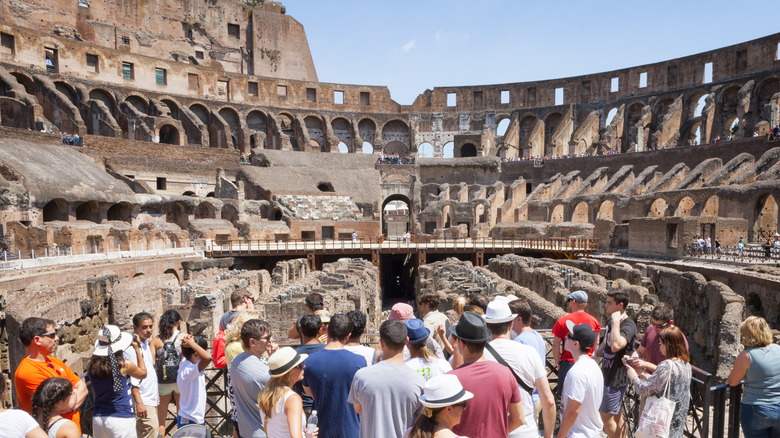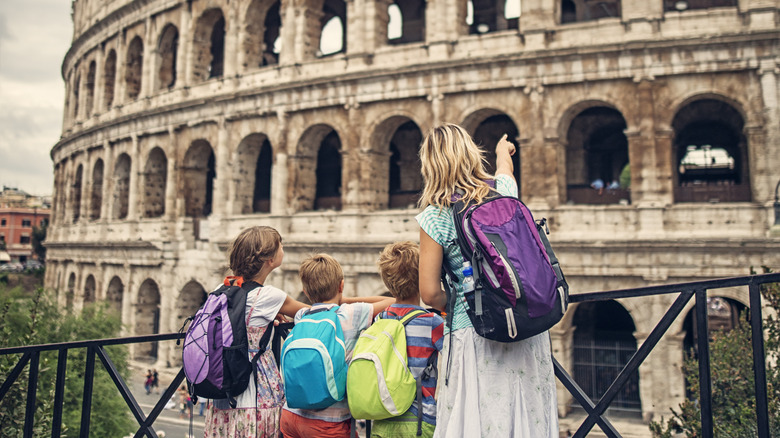No trip to Italy is complete without visiting its capital, Rome — often referred to as the “Eternal City” due to the structures still standing today from its glorious past. The most notable highlight of Rome’s city center is none other than the Colosseum, one of the seven wonders of the world. However, tourists, joining the ranks of the 6 million visitors each year, must be mindful of the type of bag they bring to the Colosseum.
Originally known as the Flavian Amphitheater, the Colosseum began construction between 70 and 72 C.E. under Rome’s most humble, “average Joe” Emperor Vespasian, the founder of the Flavian Dynasty. Measuring 615 feet in length, 510 feet in width, and 157 feet in height — equivalent to a 15-story building — the Colosseum was designed with 80 entrances to accommodate 50,000 spectators from all social classes. This architectural marvel, which took just eight years to complete, rightly earns its status as one of the most impressive architectural feats in the world.
Today, the Colosseum enforces strict security protocols concerning the size and type of bags permitted inside the monument. Large bags, backpacks, suitcases, and luggage bigger than 15.7 × 13.7 × 5.9 inches with hard shell frames or wheels are strictly prohibited. Anything larger may not fit through the security scanners, similar to those at an airport. Do not try your luck; security at the Colosseum is rigorous — all backpacks and bags will be screened before entry, and non-compliance with these rules will result in denied access.
Large bags and other items you cannot bring to the Colosseum

It’s important to remember that this is for your safety. By enforcing these rules, security can prevent emergency blockages, mitigate any risk of damage within the site’s accessible areas, and ensure the comfort of all visitors. This tourist hot spot in Rome sees upwards of 25,000 visitors per day, resulting in large lines, crowded spaces, and tight walkways. Large bags can make navigating through these congested areas difficult and uncomfortable, potentially ruining an important travel experience for many. Smaller bags, however, allow for more mobility and reduce the chances of accidentally bumping into other tourists or, worse, the Colosseum structure. Yes, it has been standing for almost 2,000 years, but it’s still ancient, and some areas are delicate.
Additionally, there are several items you’ll want to avoid carrying to the Colosseum, some of which may be obvious, while others are less expected. Weapons and sharp objects such as firearms, knives, scissors, corkscrews, and pocket knives are strictly prohibited for violence and terrorism-related reasons, and also vandalism. Perhaps you’ve heard of some infamous incidents where tourists thought it would be a great idea to carve their name into the walls of the Colosseum — please don’t be one of those people. Otherwise, glass containers are not allowed, although empty plastic containers are acceptable. Regarding food and drink, only water is permitted; all other food and beverages are banned. Selfie sticks and similar extendable camera devices are also forbidden.
Tips on choosing the right bag for the Colosseum

If your itinerary prevents you from leaving your bigger bags and possibly prohibited items behind, or if you forget and bring an oversized bag to the Colosseum, don’t worry! Affordable, secure, and accessible luggage storage options like Stow Your Bags and Luggage Hero are available nearby to accommodate your needs. These lockers can fit nearly every bag size and cost only a few dollars to rent either by the hour or the day.
Ultimately, to minimize inconvenience during your visit, it’s best to choose a small bag that can comfortably hold all of your essentials. Consider investing in a fanny pack before your trip to the Colosseum. Only bring what you really need, like a wallet, a collapsable water bottle, and your phone (which can double as your camera). What else could you possibly need when all you should be doing is marveling at the grandeur and historical significance of the Colosseum? Okay … maybe tissues (if you’re emotional about that kind of stuff).
On a serious note, carrying a small bag with fewer items allows you quicker access to important belongings and less to keep track of. In a city like Rome, where pickpocketing is a concern, it’s crucial to choose a bag that can stay close to your body with a design that minimizes physical strain and increases security (like a bag with padded straps and secured RFID pockets). Remember, this is your gear, and like a gladiator, it has to be ready for the Colosseum!

